Content
Published:
This is an archived release.
1.8 million tonnes of waste from building activities
In 2013, 1.8million tonnes of waste was generated by new constructions, rehabilitation and demolition activities in Norway. This is a decrease of about 3 per cent compared to 2012. Sixty per cent of waste has been sent to material recycling.
| Tonnes | Part | Change in per cent | |
|---|---|---|---|
| 2012 - 2013 | |||
| 2013 | |||
| Total, construction activity | 1 818 896 | 100.0 | -3.2 |
| Construction | 620 526 | 34.1 | 0.9 |
| Rehabilitation | 628 600 | 34.6 | -10.5 |
| Demolition | 569 770 | 31.3 | 1.3 |
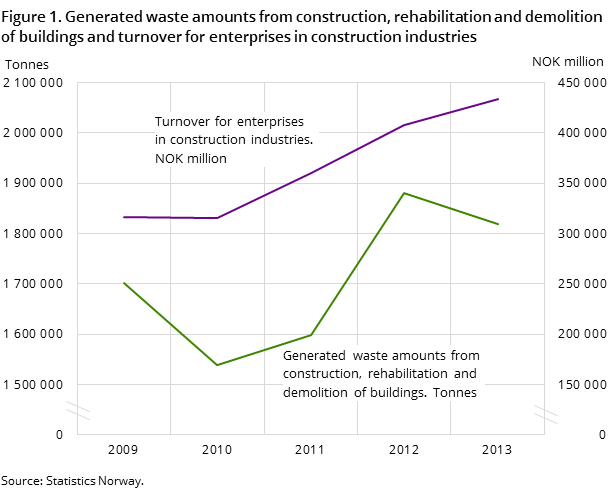
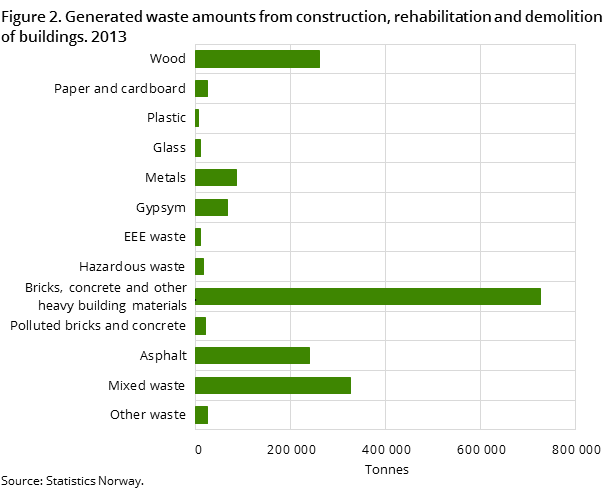
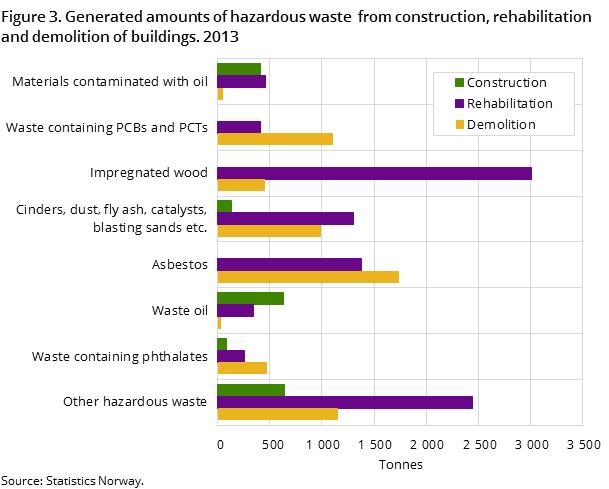
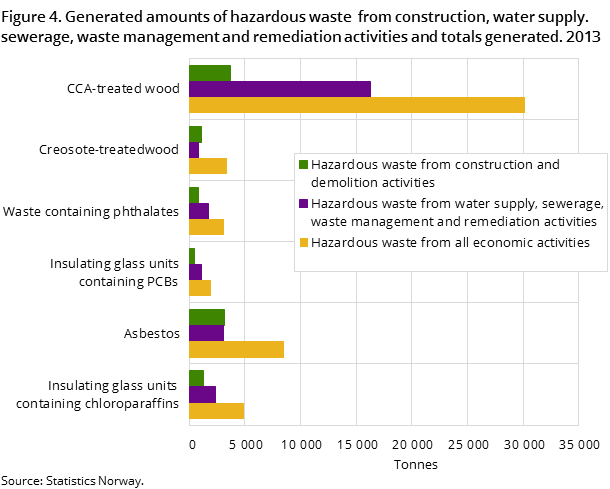
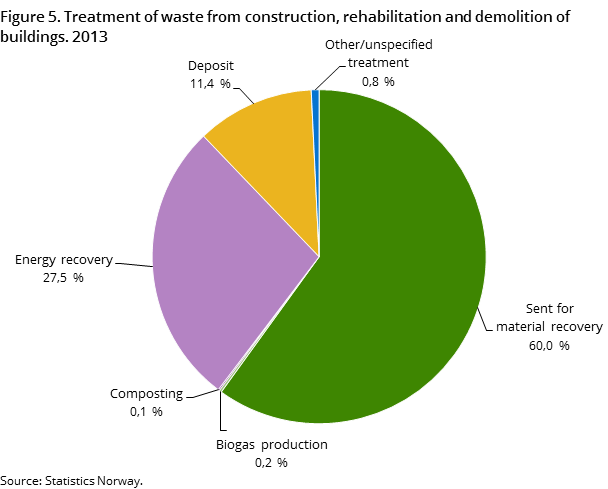
The vast majority of the waste contains materials that are relatively uncontaminated and can be disposed of at landfills or reused without special environmental considerations. Some building materials do, however, contain hazardous substances, which must be properly treated.
Nearly equal amounts of waste from new constructions, rehabilitation and demolition
Thirty-five per cent (628 600 tonnes) of the total waste generated from building activities in 2013 came from rehabilitation activities. New construction activities generated 34 per cent (620 526 tonnes) and demolition generated the remaining 31 per cent (569 770 tonnes). Heavy building materials; mainly bricks and concrete, constituted about 40 per cent of the total waste. This includes 19 830 tonnes of slightly polluted concrete and bricks. Mixed waste constituted 18 per cent, while asphalt and wood waste made up 13 and 14 per cent of the total waste generated respectively. The amount of hazardous waste has also reduced since 2012. The main fractions were materials contaminated with waste containing asbestos and waste containing impregnated wood.
High volume of waste sent to waste handling facilities was recycled
The Waste Directive (valid in Norway under the EEA agreement) includes a target of 70 per cent material recovery for non-hazardous waste from construction and demolition by 2020. It can be assumed that sorted waste materials such as metal, paper and plastics are sent for material recovery, whilst the wooden waste is most probably used for energy recovery. Waste used for backfilling operations is included in the target for material recovery
The statistics on waste treatment are based on information from a sample of waste collectors in Norway. Sixty per cent of the waste was sent for recycling. Twenty-eight and 11 per cent of the waste respectively was sent for energy recovery and deposit. Most paper, metals, glass, gypsum, brick, concrete and other heavy building materials and EE waste were sent for recovery.
Uncertainties remain in the figuresOpen and readClose
The quality of the data used as a basis for the statistics is improving. The greatest uncertainty is attributed to the demolition of buildings due to the low quality of data for the area.
Contact
-
Manju Chaudhary
E-mail: manju.chaudhary@ssb.no
tel.: (+47) 99 58 02 06
-
Camilla Skjerpen
E-mail: camilla.skjerpen@ssb.no
tel.: (+47) 48 22 72 14
